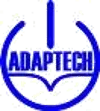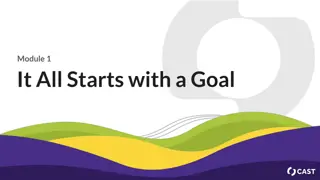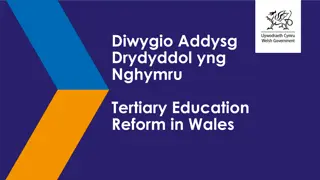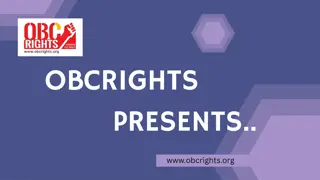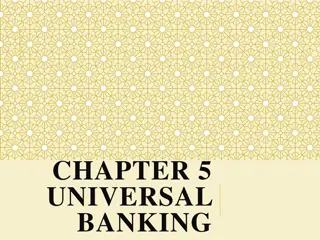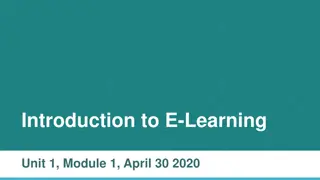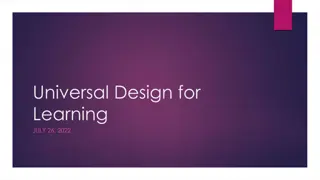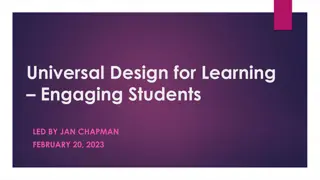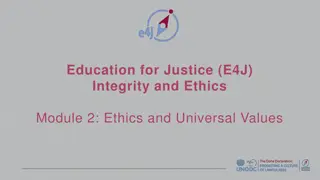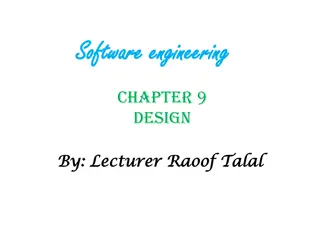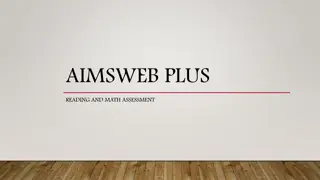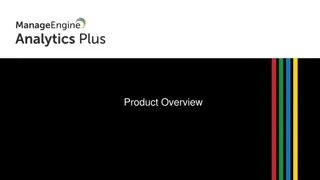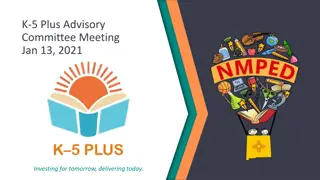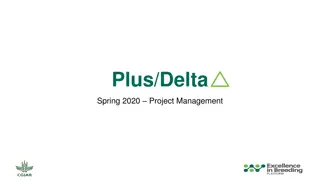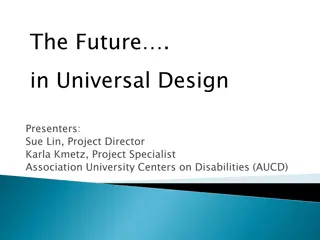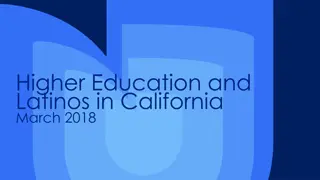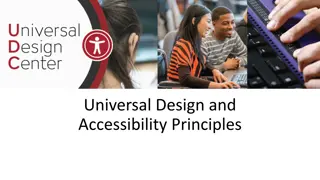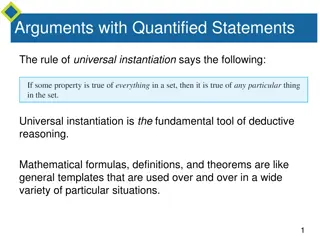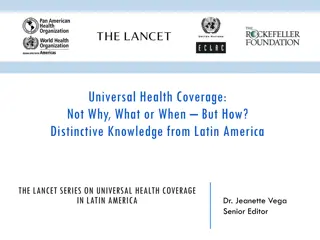Universal Design Plus E-Learning in Higher Education
"Explore the integration of Universal Design and E-Learning in higher education, focusing on the role of ICTs, specific tech solutions, course design questions, and accessible learning environments. Understand the importance of considering learner variability and accessibility requirements for all students."
Download Presentation

Please find below an Image/Link to download the presentation.
The content on the website is provided AS IS for your information and personal use only. It may not be sold, licensed, or shared on other websites without obtaining consent from the author. Download presentation by click this link. If you encounter any issues during the download, it is possible that the publisher has removed the file from their server.
E N D
Presentation Transcript
Universal Design plus E-Learning in Higher Education Roberta Thomson, M.A., UDL Faculty/Toolkit, Project Coordinator, McGill University roberta.thomson2@mcgill.ca Jillian Budd, M.A., Adaptech Research Network and McGill University jbudd@dawsoncollege.qc.ca Catherine Fichten, Ph.D., Co-Director, Adaptech Research Network, Dawson College, McGill University catherine.fichten@mcgill.ca McGill UDL: Canadian Perspectives, Montreal, QC, May 2015
Learning Objectives Understand The role of ICTs in student learning Specific tech solutions How to apply 8 key course design questions Aware Online library free/inexpensive technology 2 #UDLictMcGill
Engage & Express Share your thoughts and input throughout this presentation #UDLictMcGill 3
Potential just because a course is digital does not ensure that it is usable by everyone or that it is accessible to all (Berkowitz, 2008) 4
Potential in the rush to integrate technology into teaching, instructors and those responsible for designing, supporting, and implementing e-learning often fail to think about the specific accessibility requirements of students with different needs (Bissonnette, 2006) 5 #UDLictMcGill
Three Key Components Learner Variability Course Components Accessible E-learning Tools and their Features Blending UD, E-Learning, and ICTs Accessible Learning Environments 6 #UDLictMcGill
Course Design Questions 1. Are the barriers in the course considered for the diversity of learners? 2. Has accessibility of LMS/CMS been considered? 3. Are platforms used by mobile devices considered? 4. Are digital versions of course material accessible and useable? 7 #UDLictMcGill
Course Design Questions 5. Are there options for engagement with course content and objectives? 6. Can students demonstrate what they learned through accessible ICTs or e-learning tools? 7. Have learning modules/activities been validated for access and usability with institution s access technologist? 8. Have all stakeholders been considered in ICT related decisions? 8 #UDLictMcGill
Post-Secondary Stakeholders 1. 2. 3. 4. 5. Students Disability service providers Access technologists Instructors using e-learning Campus e-learning professionals who lead and select e-learning products Vendors: develop/sell e-learning products to institutions Others? 6. 7. 9 #UDLictMcGill
Engage & Express Who are other stakeholders? #UDLictMcGill 10 #UDLictMcGill
Concerns & Barriers Compatibility between e-learning and students ICTs is not considered High cost of ICTs Inadequate opportunities to try ICTs before purchasing Adaptech Research Network alternatives Free or inexpensive ICTs adaptech.org/downloads 11 #UDLictMcGill
Your Suggestions Software for the Adaptech Free and Inexpensive web site, especially android and Apple apps #UDLictMcGill 12 #UDLictMcGill
Questions & Contact Roberta Thomson roberta.thomson2@mcgill.ca Jillian Budd jbudd@dawsoncollege.qc.ca Catherine Fichten catherine.fichten@mcgill.ca www.adaptech.org 13 #UDLictMcGill
Training & Support Instructors may need training on Using their LMS/CMS How students with different access needs use ICTs How to employ UD in designing Course materials Teaching methods Evaluation Build in reflection time pre and during course 15
Learning Management Systems (LMSs) Desire2Learn, Blackboard, Moodle, Vclass Varying degree of customization Material presentation chunk into modules Course calendar link all modules/evaluations In-person and virtual office hours Use student-view feature to verify usability 16
Syllabus First contact with a course UD course syllabus includes photo or captioned video introducing the instructor course tour in printed or captioned video formats link to instructions on how to use the LMS/CMS description of multiple pathways to attain objectives information on how to arrange for specific needs presented in accessible format embed links to outside sources 17
Lectures Presentation in accessible format Font size and color contrast is sufficient Don t use color as the only way to convey content Avoid automatic slide transitions Use clear language Reading order of text boxes that are not part of the native slide layout screen reader usually reads these last 18
Lectures Video Captioned Player controls are accessible Embedded audio Include a transcript Post presentations online in timely manner Accessible text based format (not PDF) Use Creative Commons http://creativecommons.org/licenses/ Record lecture and caption Post on LMS: students view at own time and pace 19
Textbooks E-text in accessible format provides options Portability among devices Laptops, tablets, e-readers, smartphones Publishers may use proprietary formats restrict accessibility for certain students no option to select text for reformatting or use with screen reader may use complicated navigation schemes Before selecting an e-textbook talk to the vendor accessibility usability 20
Documents Provide in advance In accessible, useable formats Use alt text for images and tables Caption videos Described video Avoid scanned paper to pdf or image OCR document to make accessible 21
Communication On-line communication Email, Skype, Adobe Connect, discussion forum, chat Asynchronous individual time and pace Self-review of content and grammar Synchronous real time chat room, IM More access and usability challenges Provide multiple means of engagement Audio, video, text 22
Communication In-Class Synchronous tools not all UD Audience response tools (clickers) Some clickers have small screens Surveys not all universally designed UD requires engagement alternatives 23
Evaluation Multiple pathways to achieving course objectives Reduce barriers of paper, speeded testing Build in extra-time Late day bank for submission 24
Evaluation Provide options Written papers Virtual group projects Online tests Blogs Portfolios Mind/concept mapping Discussion forums Audio recording Hands-on demonstrations Student presentations Online oral exams through Skype Course participation in-class, online 25
Resources AccessDL http://www.uw.edu/doit/Resources/accessdl. html http://www.adaptech.org/en/research/fandi Adaptech Research Network: Database of Free and Inexpensive CAST http://www.udlcenter.org/aboutudl/udlguideli nes http://www.uw.edu/doit/CUDE/ Center for Universal Design in Education JISC TechDis Inclusion Technology Advice Province of Ontario: Making your Website Accessible: http://www.jisctechdis.ac.uk/techdis/resourc es/accessiblecontent http://www.mcss.gov.on.ca/en/mcss/progra ms/accessibility/info_sheets/info_comm/web site.aspx http://www.udluniverse.com UDL Course Changes sections of UDL-Universe WebAIM http://webaim.org/techniques/powerpoint/ Web Content Accessibility Guidelines http://www.w3.org/WAI/intro/wcag 26
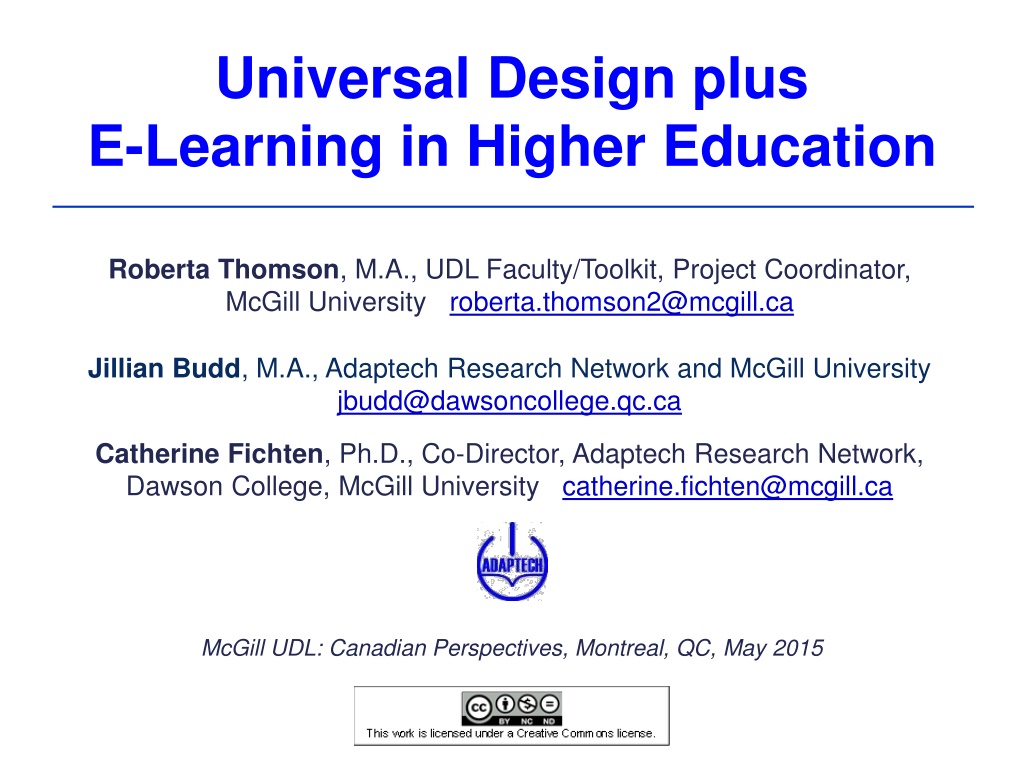
 undefined
undefined
